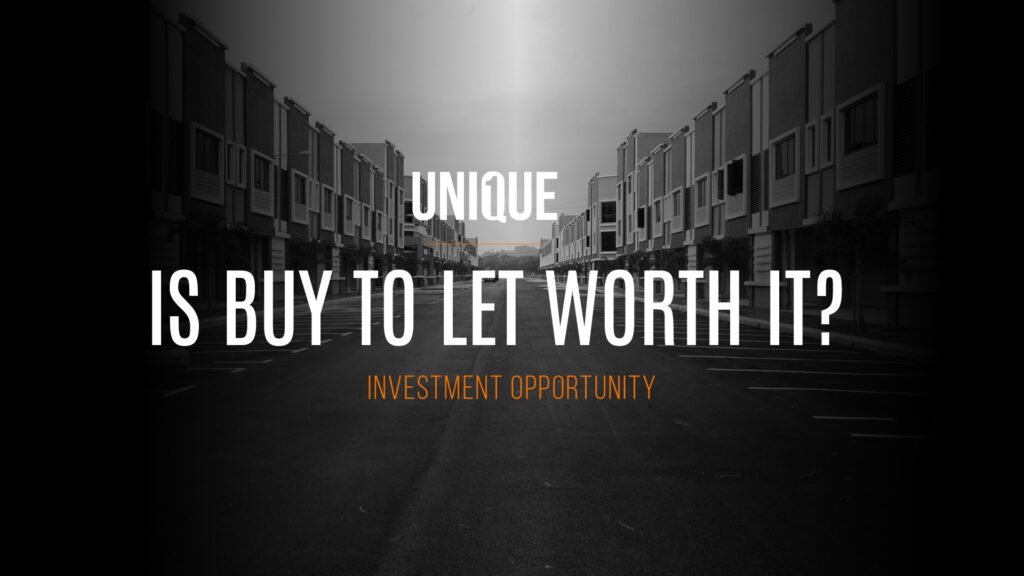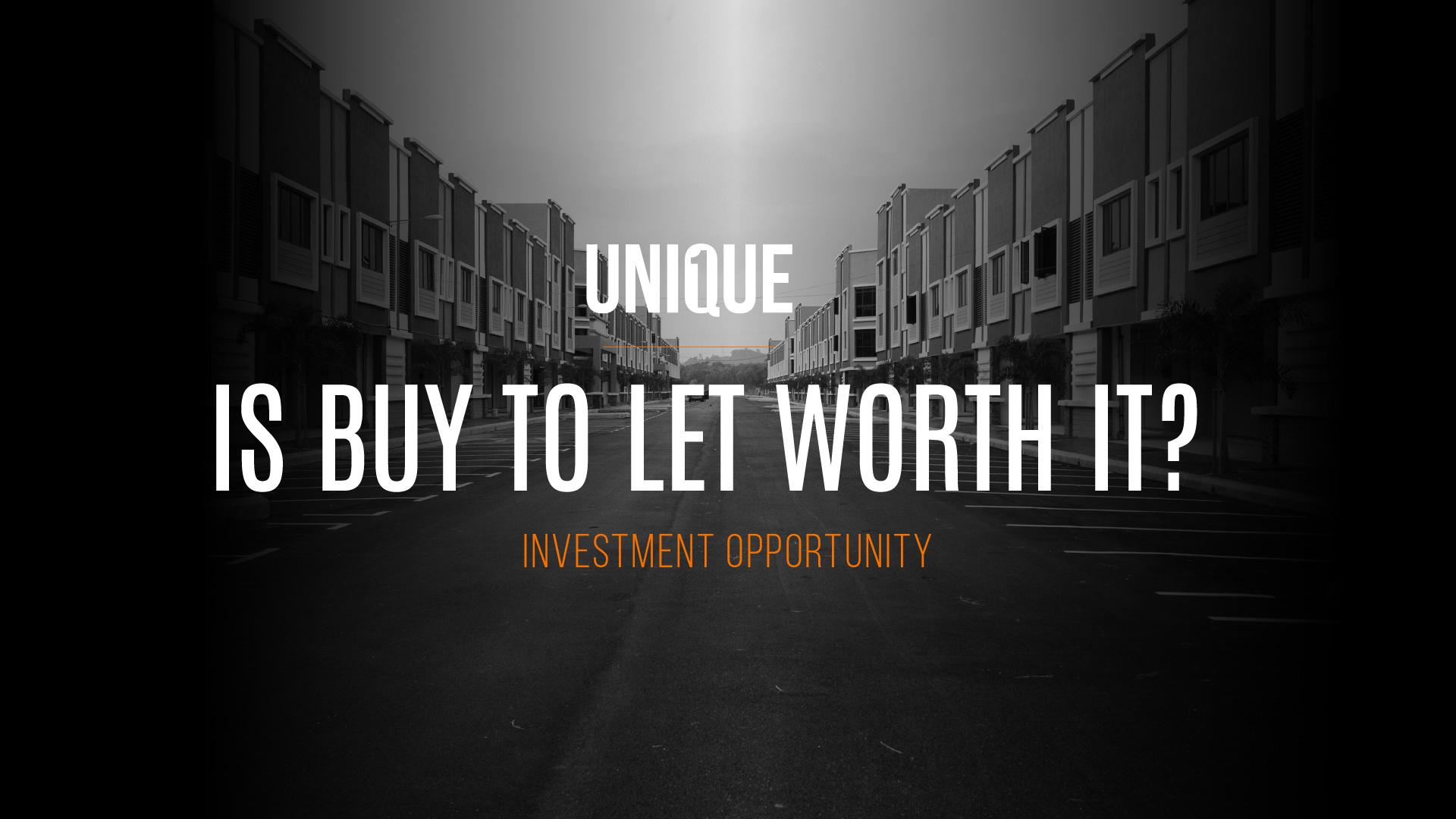
Is buy to let worth it?
If you’re asking ‘is buy-to-let worth it’ – this post gives you everything you need to know.
Many things have changed over the past decade.
Things like:
Mortgage interest relief
Stamp duty surcharge
And more
The bad news for you is:
These changes hurt buy to let landlords’ profits.
And mortgages are much more expensive.
Does this mean you need to forget about a buy-to-let investment property?
Or is buy-to-let still a profitable investment?
Let’s get into it.
[Table Of Contents]
How has buy-to-let changed?
In November 2023:
UK property prices declined at the fastest pace in over 10 years.
This makes a buy-to-let investment a more risky investment.
But – it doesn’t end there:
The government’s changes to the tax system in recent years has hurt the buy-to-let market.
What tax do you pay as a landlord?
In April 2016:
The government added an additional 3% stamp duty tax on additional properties – including second homes and buy-to-let properties.
For example:
On a £300,000 purchase – a property investor pays £9,000 more than someone buying their own home.
And – the bad news keeps coming…
Section 24 means private landlords can’t offset mortgage payments
Since April 2020:
Landlords can’t deduct the interest they pay on their mortgage before tax.
This eliminates the 40% tax relief that higher-rate taxpayers used to get on their mortgage payments.
This means landlords have to pay tax on rental income based on revenue instead of their profit after mortgage interest is paid.
Here’s what landlords get now:
Landlords get a flat-rate tax credit based on 20% of their mortgage interest.
This doesn’t have a big impact on basic-rate taxpayers – but it hurts landlords who are higher and additional rate taxpayers.
And – it doesn’t stop there…
Landlords now need to report the income used for mortgage payments on their tax returns.
This is changed from the old system where they could declare rental income post-mortgage repayment deductions.
This increase in income could move some landlords into a higher tax bracket – leading to a larger tax liability.
How do the Capital Gains Tax changes affect buy-to-let investors?
The Capital Gains Tax changes means buy-to-let investors pay more tax on any profits when they sell their rental property.
The Capital Gains Tax rate on residential property is:
28% for higher rate taxpayers
18% for basic rate taxpayers
While the Capital Gains Tax rate on other chargeable assets is:
20% for those earning over £50,270
10% for those earning under £50,270
And – it gets worse:
The tax-free allowance for capital gains tax is £6,000 (reduced from £12,300 in April 2023).
This reduction in tax-free allowance means landlords have to cough up more capital gains tax when they sell a rental property.
How have buy-to-let profits changed?
Many buy to let landlords are receiving lower profits because their 40% tax mortgage interest relief is gone.
Higher rate taxpayers are hit hard with their tax relief cut in half.
And landlords with interest-only mortgages with higher tax rates are being devastated by these changes.
Higher interest rates have changed the buy to let game
Interest rates went from 0.1% in December 2021 to 5.25% in August 2023
Before this – interest rates stayed under 1% since March 2009.
High interest rates and Section 24 has changed the playing field for buy to let property investment.
Rents are increasing.
But net profits for private landlords have dropped to their lowest since 2007.
Restricted tax relief and interest rate increases are the main reasons causing this.
Is buy-to-let still a good investment?
Whether a buy-to-let property is still a good investment for you depends on factors like:
What type of investment are you looking for?
What’s the ultimate goal of your buy-to-let properties?
Here are some pros and cons of investing in buy-to-let:
Advantages of buy-to-let
You’ll earn monthly rental income
You’ll generate capital growth if your property’s value increases
Insurance can shield you from loss of rental income, damages, and legal expenses
Disadvantages of buy-to-let
Your tax bill has increased since April 2020, resulting in lower profits
If property prices drop – your capital decreases. Also, under an interest-only mortgage, you bear the responsibility of covering any deficit if the property sells for less than the purchase price
You’ll need to factor costs like stamp duty, insurance and wear and tear
Being a landlord comes with lots of work and responsibility. This is a hands-on investment.
Selling your buy-to-let property after April 2024 will result in a higher tax liability due to the decrease in capital gains tax allowance from £6,000 to £3,000.
Buy-to-let is not a passive investment.
Buy-to-let is hands-on hard work – and it’s less profitable than it used to be.
What’s the best alternative to buy-to-let properties?
What if you could invest in a property and get:
10% annual ROI from guaranteed rent income
Long-term lease agreements with government-backed contracts
To sell the property at 130% of your initial purchase price in 3 years
Hassle-free management – everything is managed by reputable housing entities like Yale Housing, Positive Direction, or the YMCA
To impact lives – your investing in an asset that provides a safe and comfortable living space for individuals in need, creating a positive social impact
No landlord costs – Avoid the usual landlord costs, including ground rent, service charges, building insurance, and management charges, maximising your returns
Would you want in?
The good news is:
You get all the above (and more) with our Own The Asset investment.
Here’s how it works:
We work exclusively with our developer.
The developer buys a commercial unit.
Let’s say they buy an office building.
Then they convert the building into 50 apartments.
We’re partnered with the largest social housing providers in the UK.
Our social housing providers come along and fully furnish the apartments.
Then they lease the apartment for 25 years.
Next – we split the titles.
Let’s say there’s 50 units:
We sell 50 individual apartments (that are fully tenanted for 25 years) to investors like you.
Our investors gain the lease and the freehold of the apartment.
The fact is:
This isn’t an opportunity you’ll find anywhere else.
You can’t find an opportunity like this on Right Move.
This is something that, excuse the pun, is unique.
This is something that’s really creative in the investment space.
Here’s another way to explain it:
Look at a buy to let.
If you go and buy a buy to let:
you have to put 25% deposit down
you have to furnish it
you have to convince a tenant to stay there
And more
Your tenant could damage the property.
Your interest rate could go up.
This is the complete opposite.
But – the catch is:
You have to be a cash buyer – you can’t get a mortgage on this.
Think of this as a yield-based investment rather than a property investment.
The best part is…
Once we’ve sold every single unit in the block:
In 3 years – We wrap the entire block in a beautiful bow and we sell it to a a pension company.
Then we buy the property back off investors like you for 30% more than you paid for it.
Here’s an example:
You invest in a property worth: £130,000
You get 10% net rental income annually – that’s £12,996 per year.
We’ll buy the property back from you at 130% of your initial purchase price within 3 years.
You get £169,000.
Your total profit?
You’ll make £77,988 over 3 years.
If this sounds interesting to you – click the link below to learn more:
Click here to learn more about our Own The Asset Investment

